Ice hair (Exidiopsis effusa)
- Division: Basidiomycota (Basidiomycetes)
- Subdivision: Agaricomycotina (Agaricomycetes)
- Class: Agaricomycetes (Agaricomycetes)
- Subclass: Auriculariomycetidae
- Order: Auriculariales (Auriculariales)
- Family: Auriculariaceae (Auriculariaceae)
- Genus: Exidiopsis
- Type: Exidiopsis effusa (Ice hair)
:
- ice wool
- Telephora poured out
- Exidiopsis shed
- Sebacin spilled
- Exidiopsis grisea var. poured out
- Exidiopsis quercina
- Sebacina quercina
- Peritrichous sebacin
- Lacquered Sebacina
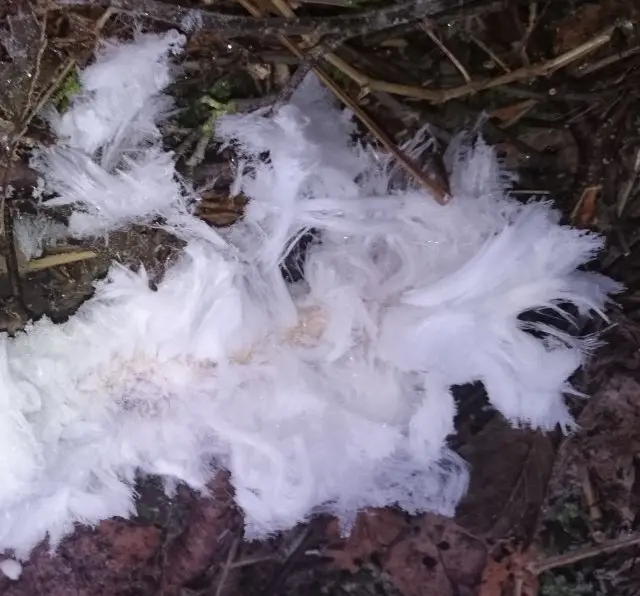
“Ice hair”, also known as “ice wool” or “frost beard” (hair ice, ice wool or frost beard) is a type of ice that forms on dead wood and looks like fine silky hair.
This phenomenon is observed mainly in the Northern Hemisphere, between the 45th and 50th parallels, in deciduous forests. However, even above the 60th parallel, this amazingly beautiful ice can be found almost at every turn, if only there was a suitable forest and “correct” weather (author’s note).
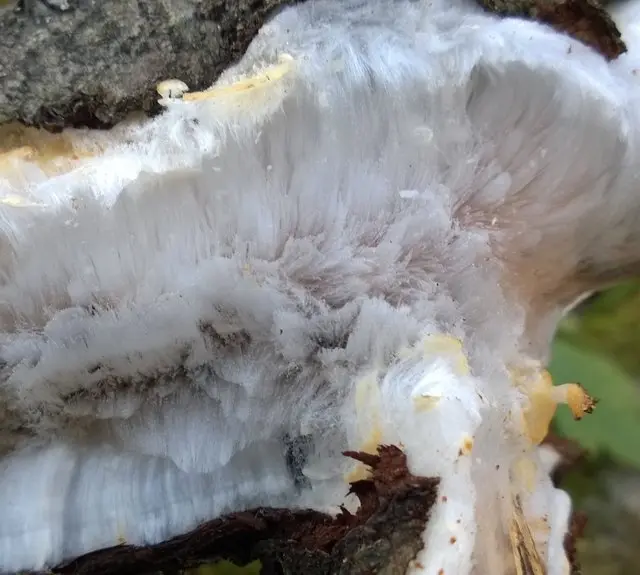
“Ice hair” is formed on wet rotting wood (dead logs and branches of various sizes) at a temperature slightly below zero and fairly high humidity. They grow on wood, not on the surface of the bark, and can appear in the same place for several years in a row. Each individual hair has a diameter of about 0.02 mm and can grow up to 20 cm long (although more modest specimens are more common, up to 5 cm long). The hairs are very fragile, but, nevertheless, they can curl into “waves” and “curls”. They are able to maintain their shape for many hours, and even days. This suggests that something is preventing the ice from recrystallizing – the process of turning small ice crystals into large ones, which is normally very active at temperatures just below zero.
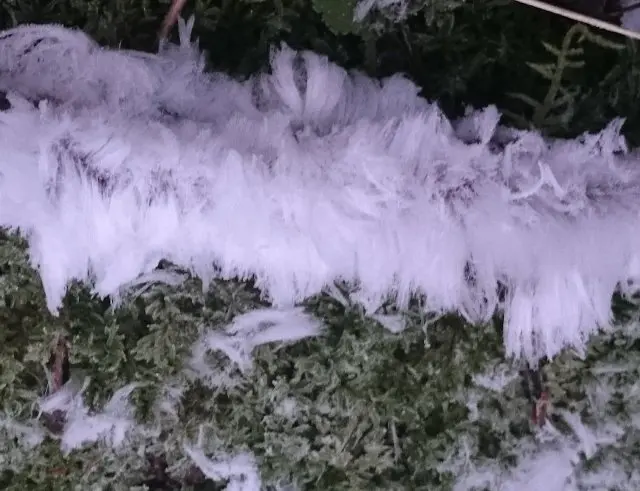
This amazing phenomenon was first described in 1918 by the German geophysicist and meteorologist, creator of the theory of continental drift Alfred Wegener. He suggested that some kind of fungus might be the cause. In 2015, German and Swiss scientists proved that this fungus is Exidiopsis effusa, a member of the Auriculariaceae family. Exactly how the fungus causes ice to crystallize in this way is not entirely clear, but it is assumed that it produces some kind of recrystallization inhibitor, similar in its action to antifreeze proteins. In any case, this fungus was present in all samples of wood on which “ice hair” grew, and in half of the cases it was the only species found, and its suppression with fungicides or exposure to high temperature led to the fact that “ice hair” no longer appeared.
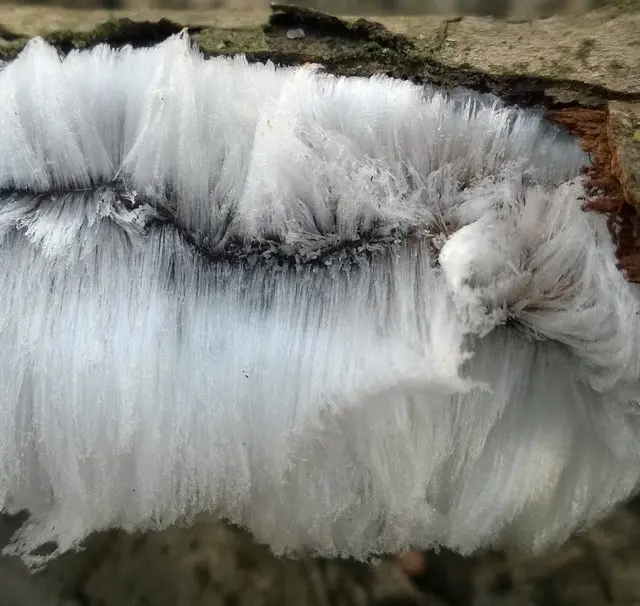
The mushroom itself is quite plain, and if it were not for the bizarre hairs of ice, they would not have paid attention to it. However, in the warm season it is not noticed.
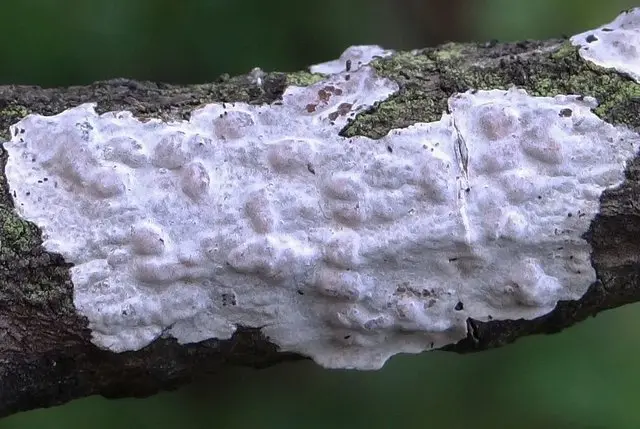
Photo: Gulnara, maria_g, Wikipedia.









